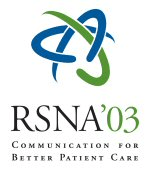Abstract:
HTML
Purpose: Conventional X-ray is usually the first imaging method when gout is clinically suspected. Ultrasonography (US) is known to be able to detect urate deposits, but its potential role in evaluation of patients having gout has not yet been investigated. The purpose was to assess the sensitivity and specificity of X-ray and US in revealing signs of gout in patients with a clinical suspicion of gout.
Methods and Materials: In a prospective study, 35 adult patients (4 women, 31 men) having clinical suspicion of gout underwent conventional X-ray and high resolution US. X-ray examinations were performed in at least 2 planes, using modern digital systems, and US examinations were performed using high quality broadband linear transducers (8-14 MHz). X-ray imaging findings characteristic of gout, which we regarded for this study, included articular and periarticular bone erosions as well as cloudy opacifications (with densities between soft tissue and bone). US imaging findings suggestive of gout were stippled bright foci and hyperechoic areas (with or without acoustic shadowing). Definite diagnoses were established by microscopy of aspirates and/or by characteristic clinical and laboratory findings.
Results: Sixteen patients had a definite diagnosis of gout, 11 were diagnosed having another disease, and 8 were excluded from the study (since a definite diagnosis could not be found). X-ray revealed findings suggestive of gout in 7 of 16 patients having gout (44%) and in 2 of 11 patients without gout (18%). US detected findings suggestive of gout in 14 of 16 patients having gout (88%), and in 3 of 11 patients without gout (27%). X-ray diagnosed gout with a sensitivity of 44% (7 of 16 patients) and specificity of 82% (9 of 11 patients) whereas US diagnosed gout with a sensitivity of 89% (14 of 16 patients) and a specificity of 73% (8 of 11 patients).
Conclusion: US is a sensitive method for depicting deposits of urate and is 100% more sensitive than conventional X-ray. Our data indicates that US can be used successfully in patients having clinical suspicion of gout when laboratory findings and X-ray results are inconclusive.
Questions about this event email: thomas.rettenbacher@uibk.ac.at
Rettenbacher MD, T,
Gout: Evaluation of High-Resolution US vs Conventional X-ray in Depicting Typical Imaging Signs. Radiological Society of North America 2003 Scientific Assembly and Annual Meeting, November 30 - December 5, 2003 ,Chicago IL.
http://archive.rsna.org/2003/3107802.html

